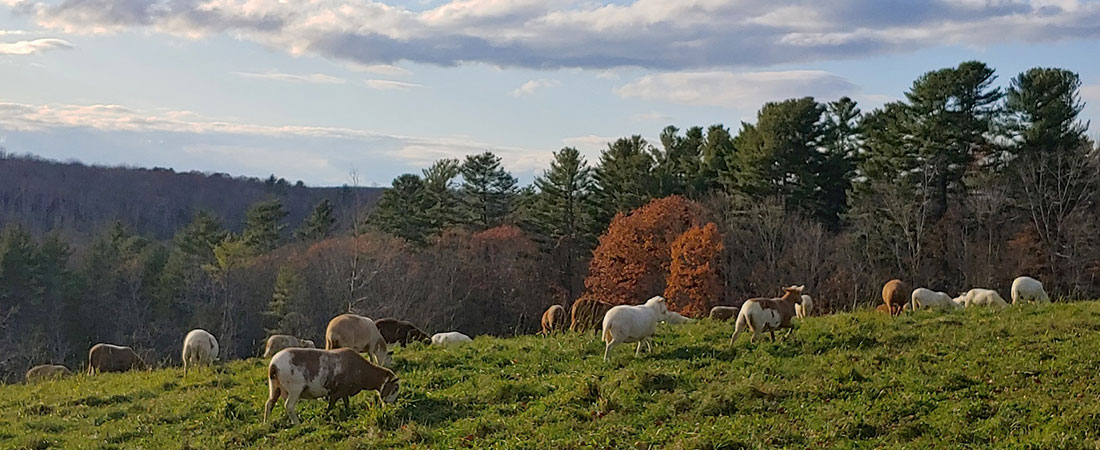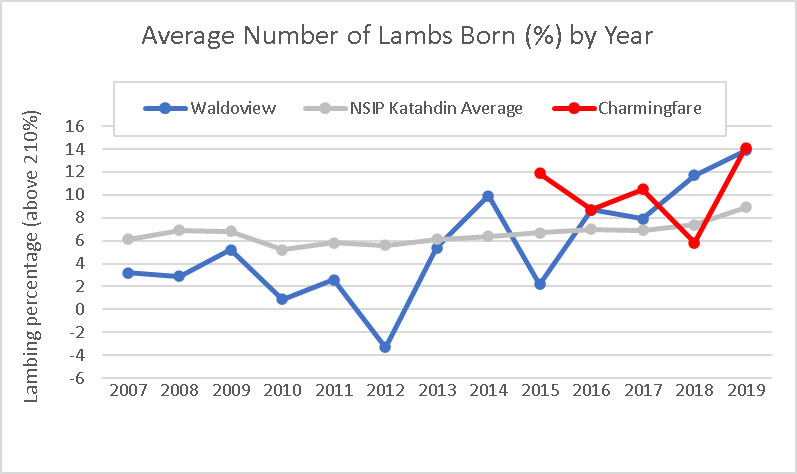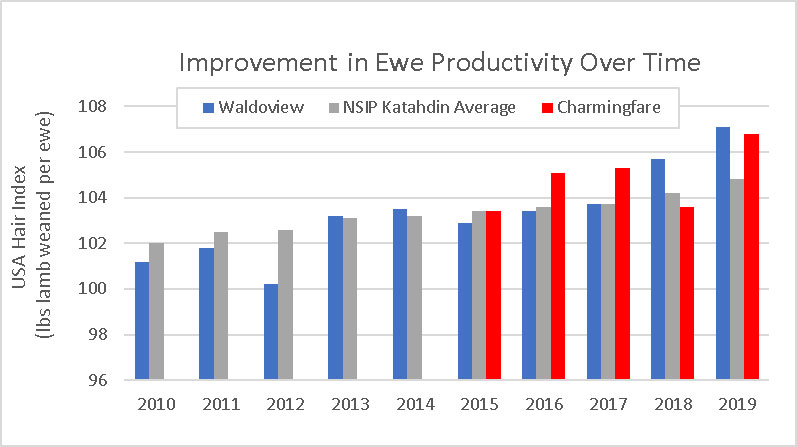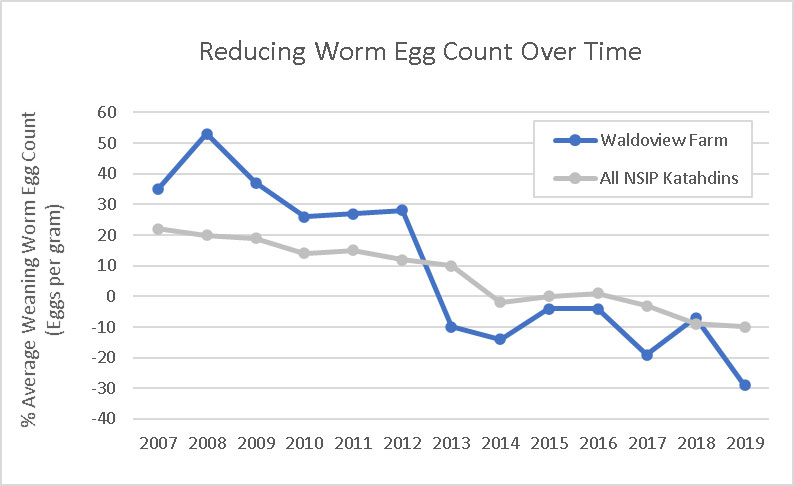Our Genetic Trends

Genetic progress is often an uphill climb, a painstaking process, but it is key to your success. It’s also a good measure of how well you understand your breeding objectives and how successful you’ve been in meeting those objectives. For many years, we have been using Estimated Breeding Values (EBVs) from the National Sheep Improvement Program (NSIP) to guide our selection decisions. We’ve made significant genetic progress for a number of economically important traits. Despite some annual fluctuations along the way, the general trend for our flocks is improvement above the breed average. Data from our farms fluctuate a bit more than the breed average because our trend lines are based on roughly 50 to 150 lambs annually, whereas the breed average trend is based on several thousand lambs.
Prolificacy, the number of lambs born per ewe, is a strong indicator of potential revenue to your operation. Not everyone likes triplets, but conversely, singles are not profitable. So, our attempt has been to retain ewe lambs with the potential to produce twins at least and slightly more triplets than singles. The average lambing percentage for the Katahdin breed is considered 210%. The figure at left shows the trend in our estimated lambing percentages over time. After many years of selection, we have moved our flocks towards an above average trend compared to other Katahdins in NSIP.
The success of your sheep operation is fundamentally tied to the productivity of your ewes. Often measured in terms of pounds of lamb weaned per ewe, productivity is a function of number of lambs born, their survival, their mothers milk production and maternal skill, and the lambs innate genetics for growth to weaning. Because following the trend of all these individual traits simultaneously would be complex, NSIP provides an index that simplifies this tracking. Known as the USA Hair Index, it provides a simpler means of monitoring a complex set of traits that contribute to productivity. Katahdin breeders utilizing EBVs have seen a steady increase in ewe productivity over time. Our on-farm data has tracked that improving trend for several years and recently has significantly exceeded that general trend.
Parasite resistance is an exceptionally important trait for those flocks that run sheep on pasture during the grazing season. In the northeast, our “window” of time for exposure to parasites is shorter than in the south, but it is intense nevertheless and requires close monitoring, adaptive management practices, and if unsuccessful may result in significant mortality of lambs. Many breeders believe genetically resistant stock is the best tool to combat parasitism. We have been selecting for parasite resistance for well over a decade. In the figure at left, we present the average counts of Strongylid eggs in our lambs over time. Unlike our previous figures, here it is desirable to be below the breed average. That is, to have a lower average count of worm eggs. Our efforts have been trending downward almost from the start, but not until we imported a significantly resistant ram for the 2013 lamb crop, did we finally drop below the breed average. With few exceptions, we have maintained that trend over time. We are confident that with the rams we have recently acquired, and the highly parasite resistant ewes we have retained, we will continue that trend.



